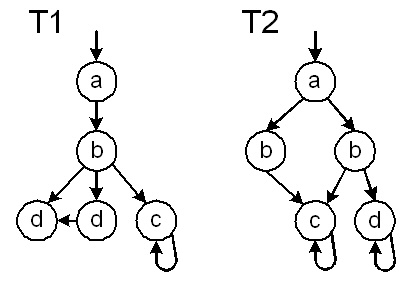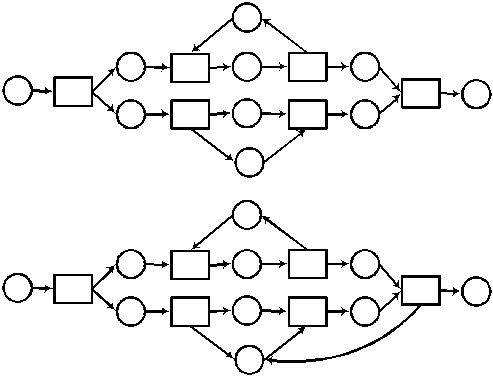Assignment 2
Due
on June 19, 2006May 1-15
- Consider the following problem:
Six soldiers who are heavily injured,
try to flee to their home land. The enemy is chasing them and in
the middle of the night they arrive at a bridge that spans a river
which is the border between the two countries at war. The bridge
has been damaged and can only carry two soldiers at a time.
Furthermore, several land-mines have been placed on the bridge and a
torch is needed to sidestep all the mines. The enemy is on their
trail, so the soldiers know that they have only 2 hours to cross the
bridge. The soldiers only have a single torch and they are not
equally injured. The following table lists the crossing times
(one-way!) for each of the soldiers:
soldier S0 5 minutes
soldier S1 10 minutes
soldier S2 20 minutes
soldier S3 25 minutes
soldier S4 30 minutes
soldier S5 35 minutes
Does a schedule exist which gets all six soldiers to the safe side within 120 minutes?
soldier S1 10 minutes
soldier S2 20 minutes
soldier S3 25 minutes
soldier S4 30 minutes
soldier S5 35 minutes
Does a schedule exist which gets all six soldiers to the safe side within 120 minutes?
(Ruys & Brinksma 1998)
In essence, this is a scheduling/planning problem, and we can take advantage of the fact that a model-checker explores all possible orders of interleavings. Thus, we can easily have the model-checker construct all the different orderings for moving soldiers across the bridge.
We would like to get SPIN to generate a trace for us that illustrates a schedule where the soldiers can get from the unsafe to the safe side in 120 minutes or less. SPIN generates counter-example or property-violation traces. Therefore, we need to ask SPIN to try to prove that a schedule does not exist. If it finds a counterexample, it will illustrate a schedule that is a solution to the soldiers problem.
Using Linear Temporal Logic, we can formalize the desired property directly. One can also get SPIN to generate an appropriate trace using an assertion.
You have to build a Promela model to solve this problem and generate a trace illustrating some "good" schedule.

